

With consumers more attuned to subtle differences during brand purchase and discovery, engaging with their senses has become essential for brands. Today’s customers relate to a brand through a set of interactions that involve not only rational and physical behavior, but also emotional and sensorial. Lodging a brand’s name across sensorial categories is a great way to ignite sensory stimuli, conveying a sense of sensoriality research, as we unknowingly attach intrinsic meaning to certain sounds, to certain sights, to certain flavors and taste, and certain scents, thus establishing stronger connection with and appeal to customers.
Whilst a brand name is first and foremost a sign of recognition, it is also an invitation to enter and experience a Brand Universe. Here at Labbrand, we believe a brand is built on 4 key facets that shape a brand’s core identity and perception.
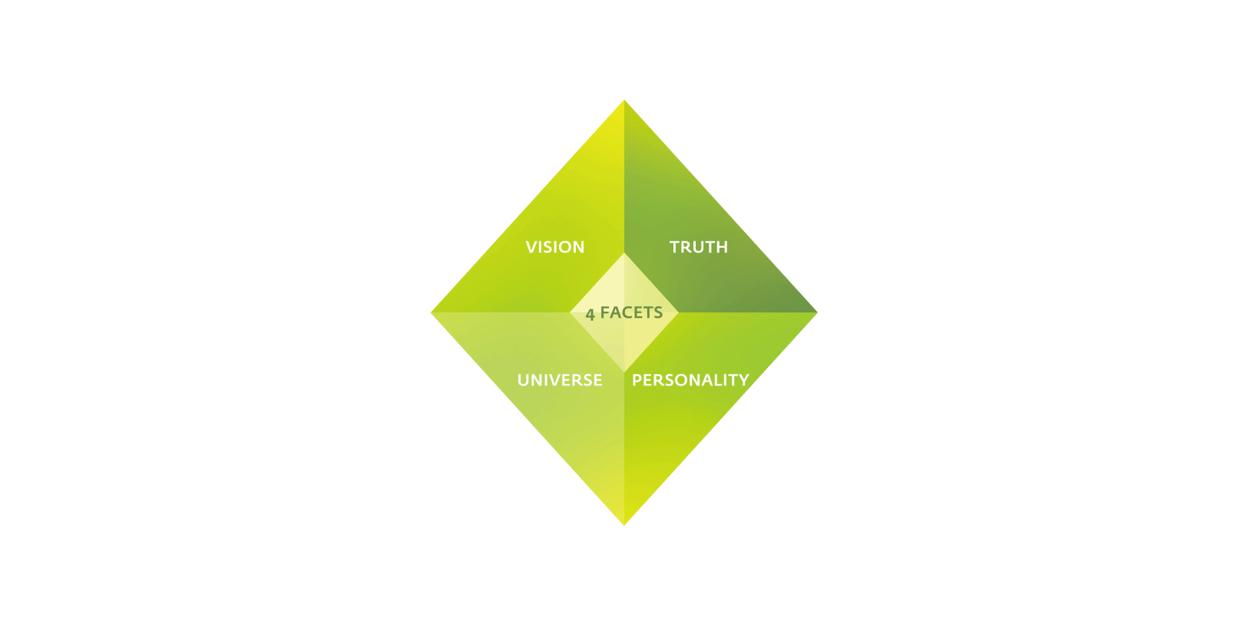
Labbrand’s 4 facets framework
By opening doors to the imaginary world the brand awakens, the Brand Universe is an important part of the narrative, and a powerful tool in developing emotional resonance between the brand and the consumer. From a consumer’s standpoint, this often implies projecting sensorial elements onto the brand, such as vivid images, sounds, smells, tastes and touches that feel familiar and are attached to a scope of common or intimate perceptions.
There are different ways to convey the sensoriality of a brand universe through the name, but one of the most important ones is sensorial naming. Sensorial naming consists of choosing a name that falls into the consumer’s five senses. As it is not invasive, it just leaves you a subtle impression and a unique feeling. It allows a brand to make a connection between functional and emotional benefits (one of our 4 facets, which we call Truth) whilst opening a brand universe.
We perceive our world through five senses — our eyes, our ears, our skin, our nose and mouth are all receptors that relay information to the brain about the environment we are in.
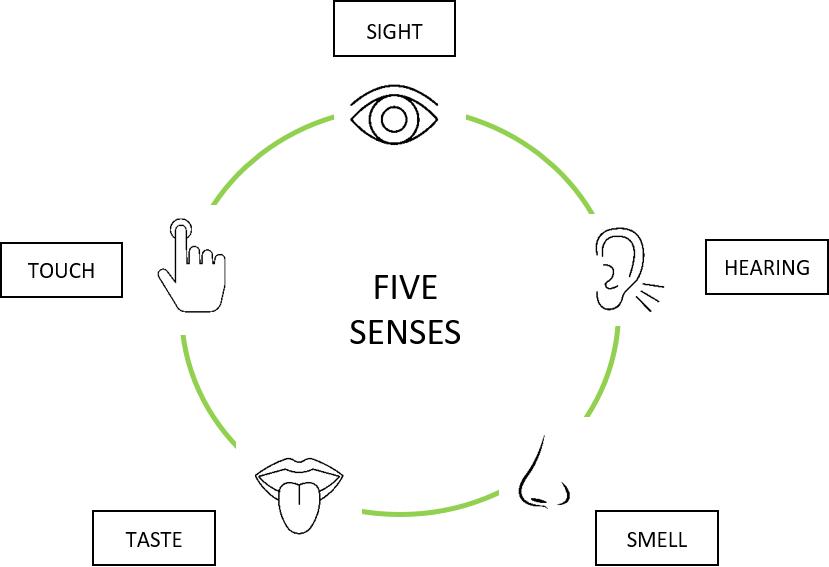
FIVE SENSES
Being sensorial for a brand name can start off bing generic and simply stating the word “sense”. When you name a brand “SENSEO” for instance (coffee capsules), you are promising a sensorial quality without going deep into the description, leaving it open to experience and interpretation.
But there are also some brand names that make you see, touch, smell, hear, and taste through their meaning. They transport consumers into a specific universe through existing nouns that convey one specific sensation.
Let’s see how it works through examples related to different senses.

Brand names that engage different senses
Feather is a Japanese razor brand established in 1932. Opting for the name “feather” which is opposite to the intrinsic sharpness of the product, the brand aims to convey a sense of the smooth and caressing effect of the razor as it touches the skin. The name “Feather” is an object that symbolizes the sensation.
Goop is the lifestyle and wellness brand developed by celebrity Gwyneth Paltrow which started off as a weekly newsletter, aimed at providing information related to food, health, and travel. The word goop is defined as “any thick liquid or sticky substance”. Whilst the sensation of a sticky substance could seem unpleasant, it conveys the raw and organic aspect of the brand’s offer (skincare, food, gut health, etc.). The term “goop” is a texture that evokes a sensation.
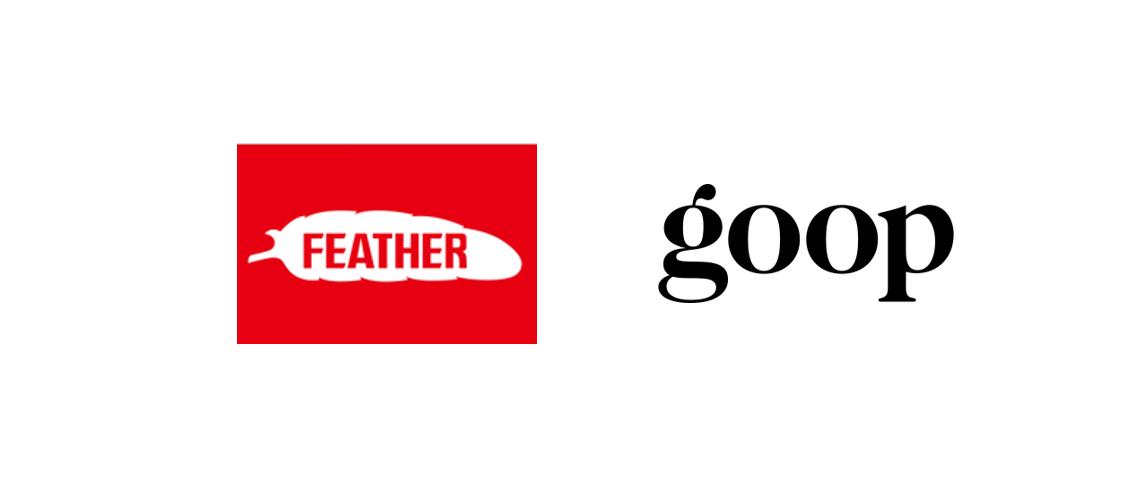
Brand names that evoke the sense of touch: FEATHER AND GOOP
Orange is a multinational telecommunications corporation of French origin. It has 266 million customers worldwide and employs 89,000 people in France, and 59,000 elsewhere. It is the eleventh largest mobile network operator in the world and the third largest in Europe. The name “Orange” conveys the brightness and vitality of the color. In this case, it is a color that symbolizes the sensation.
Eclaz is the name of a new window glass technology developed by Labbrand for Saint-Gobain, the world leader in coated glass. With the name “Eclaz”, derived from the French word Eclat (radiance), you can see the lights entering your house and feel a sense of wellbeing. It is the light that symbolizes the sensation.
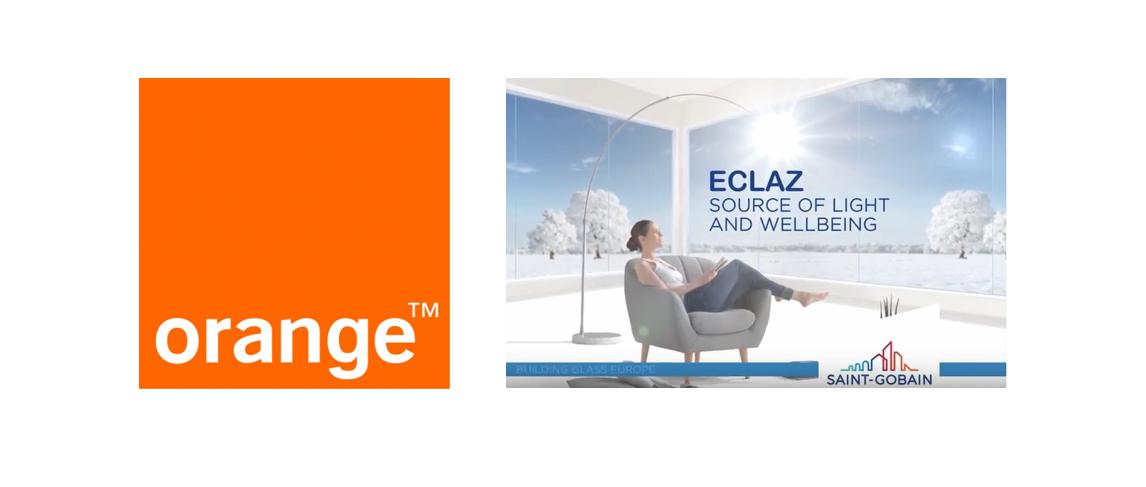
Brand names that evoke the sense of sight: ORANGE AND ECLAZ
NEQTA is the name of a mid-tier hotel brand targeting Chinese market created by Labbrand for Fairmont Raffles Hotels International (FRHI Hotels & Resorts) partnered with Golden Land Group. The name “NEQTA” is derived from the English and French word Nectar, which means the holy honey beverage for god in Greek mythology and also evokes the feeling for the exquisite roundness of a drink. It is the food and its evocation of pleasurability that symbolizes the sensation.
Milk Makeup is a makeup brand cruelty-free, paraben-free, and 100% vegan created by MILK creative platform in New York City. With the name Milk, you can taste the softness and simplicity. The universal symbol of milk makes it unpretentious, almost innocent. It also echoes with the fluid, nurturing, and pleasurable textures of their make-up products. It is the food that symbolizes the sensation.
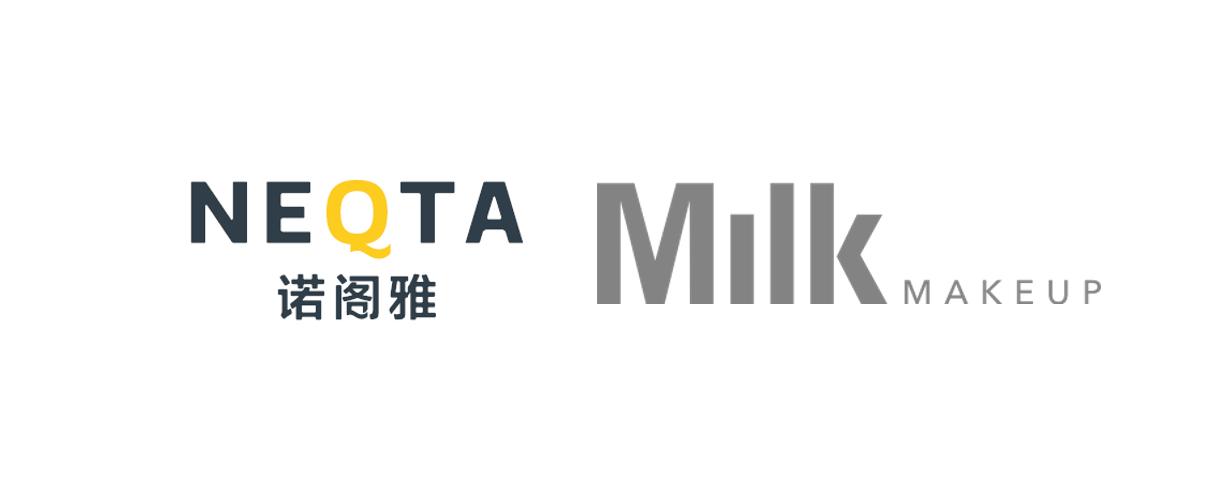
Brand names that evoke the sense of taste: NEQTA AND MILK MAKEUP
The sound of a name may seem like something arbitrary, but choosing a name that takes on an actual sound is a strong way to convey the sonority of a brand. When it comes to food, a great way is to convey the quality of the product and prompt memory recall. For example, Crunch is a chocolate brand from Nestle company launched first in the US. With the name Crunch, you can almost hear the sound of the product in your mouth.
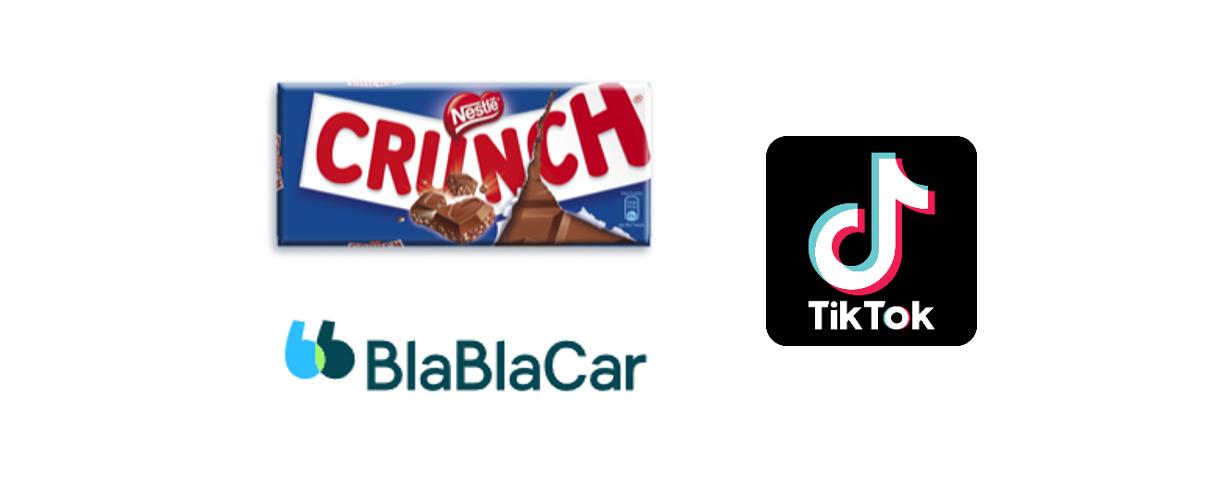
Brand names that evoke that sense of hearing: CRUNCH, BLABLACAR AND TIKTOK
Previously known as ‘musical.ly’, the Chinese video-sharing social platform changed its name to TikTok. The evocation of the quick ticking of a clock fits to the short-form of 15-second videos people can share as well as installs the perception of a certain beat inside the consumer’s mind, which is quite fitting for a platform centered around music, dancing or lip-sync. The sound of a tempo symbolizes the sensation.
BlaBlaCar is the world’s leading long-distance carpooling platform — a global, trusted community of 90 million drivers and passengers in 22 countries. Blabla refers to the conversations you hear within a car as blabla is “mumbo jumbo” and blablabla also means “etc.” which evokes the feeling of someone who won’t stop chatting.
This powerful sense is one that triggers strong memories and attachments. Even the name of a note, an ingredient related to a smell can lure our minds into a journey beyond the frontiers of rationality.
Rose Tonka is a fashion designer brand whose name combines the soft elegant fragrance of roses with the strength and roundness of Tonka beans to make you smell the richness of the offer.
Safran is a French multinational aircraft engine, rocket engine, aerospace-component and defense company. The word Safran translates as rudder blade and as saffron, which the company highlights as one of the catalysts for early international trade. This name evokes the rare and expensive spice and its historical assimilation to international trade which takes us on a far-away journey.

Brand names that evoke that sense of smell: ROSE TONKA AND SAFRAN
As you can see, some of these sensations are intrinsic characteristics of the product and work as metonymy to make you feel the full product experience, others are completely disconnected from the product features, aiming to convey a more holistic impression instead.
To create a sensorial experience, some other brands combine different sensorial perceptions to offer their customers a broader or fuller spectrum of sensorial sensations through metaphors.
La Prairie, for instance, the Switzerland face and skin cosmetics is positioned as an “intemporal universe beauty [which] discovers the most luxurious care skin, exquisite fusion of science and art”. The name “La Prairie” means Meadow in French and is rooted in the nature side of the brand. It evokes a rich natural atmosphere which combines smell, touch, sound and sight. This example also shows that we can’t say everything through a name, and that naming also implies making choices and sacrifices, as for La Prairie, the name forgoes the art and science aspect of the product.
Brand names that evoke that uses a multisensorial approach: LA PRAIRIE,LIME AND RAINS
An interesting case of synesthesia is the electric scooter brand LIME. Evoking the citrus fruit, this name sits in between a sensorial evocation linked to both sight and taste. The juicy and sour properties of the fruit inspire attributes of freshness and vitality. With the term also referring to the green color “lime”, this name aims to convey the “green” aspect of the product which claims to be a sustainable alternative to city transportation.
Another example could be outwear fashion brand RAINS, who also projects an entire landscape of senses and possible resonances with a name evoking a simple weather phenomenon, strategically evoking a wet or dry sensation, as well as a smell, vision and sound landscape that installs a specific mood.
Ultimately, senses don’t have to be described to be triggered. And indeed, we have limited vocabulary to express them. But cross-modal signals can amplify the senses through associations, or vivid images of a place, an object that are vessels of integrated perceptions and feelings attached to them.
1. Create your universe and define your personality
Take time to create your Universe and define your Personality before creating your name. Explore this imaginary using your senses before actually creating your name. Use projective techniques to explore the inner universe of your brand: tools such as dream-worlds, stories, Chinese portraits and mood boards are very useful. From this will emerge objects, colors, sounds, settings… enabling you to gather the necessary material to support and illustrate the emotions you wish to instill.
2. Amplify your brandscape
Remember that a great name is a name that amplifies your brandscape beyond the rational realm: by tapping into a soundscape, smellscape, feelscape – producing strong emotional connection and associated memory.
3. Achieve strong differentiation
Beyond description or rational benefits, these sensorial names, by creating their own territory, allow strong differentiation.
A Labbrand Group Company © 2005-2024 Labbrand All rights reserved
沪ICP备17001253号-3* Will be used in accordance with our Privacy Policy
To improve your experience, we use cookies to provide social media features, offer you content that targets your particular interests, and analyse the performance of our advertising campaigns. By clicking on “Accept” you consent to all cookies. You also have the option to click “Reject” to limit the use of certain types of cookies. Please be aware that rejecting cookies may affect your website browsing experience and limit the use of some personalised features.